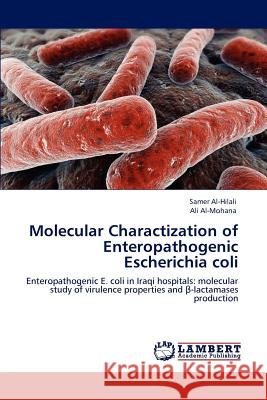Molecular Charactization of Enteropathogenic Escherichia coli » książka
Molecular Charactization of Enteropathogenic Escherichia coli
ISBN-13: 9783847315841 / Angielski / Miękka / 2011 / 156 str.
Enteropathogenic Escherichia coli (EPEC) strains are diarrheagenic E. coli belonging to specific serotypes, historically associated with outbreaks of infantile diarrhea, which are one of the main causes of severe diarrhea throughout the world. Several chromosomal and plasmid-borne virulence factors have been linked with the ability of certain strains to cause diarrhea. Over the last few years, numerous outbreaks of infections with strains producing extended spectrum -lactamases (ESBLs) and AmpC -lactamases, has been observed worldwide. In Iraq, few reports are available on the prevalence and molecular identification of EPEC. In addition, little attention has been paid to the molecular studies of ESBLs and AmpC -lactamases. Therefore, there is an increase demand to investigate the role of EPEC in children with diarrhea and identify the prevalence of -lactam resistance among these strains. This book provides a new data on the prevalence of EPEC in children younger than two years of age in Iraqi hospitals as well as characterizes their virulence genes and detection the genetic factors controlling production of ESBLs and AmpC -lactamases.
Enteropathogenic Escherichia coli (EPEC) strains are diarrheagenic E. coli belonging to specific serotypes, historically associated with outbreaks of infantile diarrhea, which are one of the main causes of severe diarrhea throughout the world. Several chromosomal and plasmid-borne virulence factors have been linked with the ability of certain strains to cause diarrhea. Over the last few years, numerous outbreaks of infections with strains producing extended spectrum β-lactamases (ESBLs) and AmpC β-lactamases, has been observed worldwide. In Iraq, few reports are available on the prevalence and molecular identification of EPEC. In addition, little attention has been paid to the molecular studies of ESBLs and AmpC β-lactamases. Therefore, there is an increase demand to investigate the role of EPEC in children with diarrhea and identify the prevalence of β-lactam resistance among these strains. This book provides a new data on the prevalence of EPEC in children younger than two years of age in Iraqi hospitals as well as characterizes their virulence genes and detection the genetic factors controlling production of ESBLs and AmpC β-lactamases.











